Articles
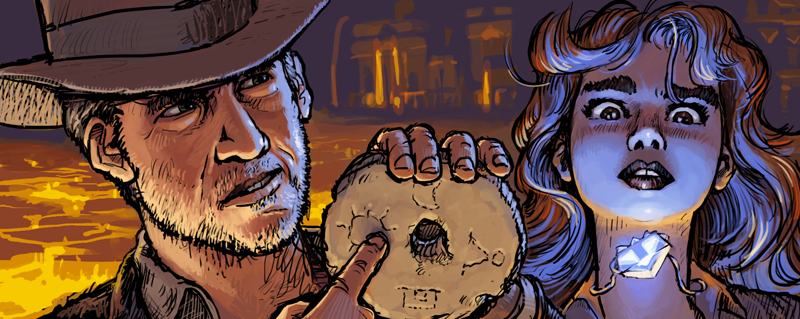
LucasArts' Secret History #7: Indiana Jones and the Fate of Atlantis Spinning Into the Ether
Spinning off into the ether
Fate of Atlantis was a truly fantastic game and obviously the best Indiana Jones game, but its greatness has never been successfully replicated. Not that attempts haven't been made of course. Ex-Mojoer Capel has a look at all of them...
Indiana Jones and the Iron Phoenix
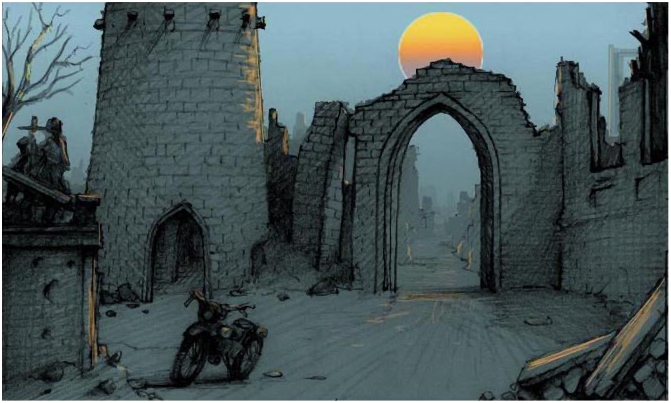
Sometime after the release and success of FOA, LucasArts were obviously looking into making another Indy game and of course went for another SCUMM engine adventure. Hal Barwood unfortunately passed on the project for some reason, possibly to work on Big Sky Trooper instead. Joe Pinney would step up to direct the idea they had, called Indiana Jones and the Iron Phoenix, but after he left the company it fell to Aric Wilmunder to take the reins.
The plot was set for the first time post-World War Two and would see Indy up against Communist Russians, led by a female commander (this is sounding familiar). It involved Indy searching for the Philosopher's Stone (called the Sorcerer's Stone in Dumbassville), encountering not only Russians but also a group of Nazis trying to resurrect Hitler.
For this game, LucasArts tried to get a third-party team involved with the development, presumably as most of their internal studios were focused on the likes of Day of the Tentacle, Star Wars: Rebel Assault and Sam & Max Hit The Road. This hit a snag right away, as Aric Wilmunder describes: "The president of LucasArts had been contacted by a Canadian company that wanted to work with us, so for three months, we tried to teach them how to build the project, but they were never able to deliver the necessary quality". (Source: aventuraycia.com)
Finding himself frustrated with the failure of this Canadian developer to deliver, Wilmunder would also begin to feel that he was taking on too much work. Along with directing this project, Sean Clark required that Wilmunder be available to provide full engineering support for The Dig which was also having a troubled development.
Of course, there was also the famous 'Art Deco' look that supposedly divided Bill Stoneham (the background artist) and Anson Jew (the lead animator). It was never intended for the game to end up like that, it was simply an attempt at making the characters larger and more realistic than in FOA. I talked with Anson Jew and asked him to explain this to us...
"With DOTT, everyone could see that larger characters added a lot to the gaming experience, and the technology was allowing that to happen. Everyone wanted that for Indy, since in the previous games, with an Indy that was about four heads tall, he looked too cute and comical.
As the lead animator, the design duties fell in my hands. The project leader's idea was to give Indy a more realistic, fully rendered look with normal, non-exaggerated human proportions. Not trapped lines like a comic book or cartoon but rendered like the smaller Indys in the previous games. The problem with that is that the larger your character, the more color slots you need to keep that rendered look (the palette is based on indexed colors, and each character is assigned a predetermined number of color slots). Otherwise you get color banding, resulting in a flattening, or loss of depth-- what will fly with a character that is say, 50 pixels tall will not fly when the same character is twice that size. I pleaded with the project leader to allocate more colors to the animation palette, but to no avail. So here I was, trying to draw these larger characters that were allocated the same number of colors to the color palette that we had used for the earlier small characters. Some people thought I was trying to do a "Batman Animated" or "Art Deco" look. And while I am a fan of the Batman Animated series and Art Deco, that was not at all the intent. I was just trying to do the best I could with what I had."
After it became apparent that the larger characters were becoming too 'Art Deco', were you going to go back to smaller FOA-style characters or did you have an idea about how to make the larger ones work?
"The backgrounds were already painted and designed for larger characters. You can't go back without redoing everything. I have since heard that there was an attempt to somehow use video instead of animation, and if that was the case, it was done without my knowledge. It would never work anyway, since we had already experimented with that on the first Dig, and you'd just end up running into the same palette problems I mentioned before."
To hit the final nail in the game's coffin, a showing at the European Computer Trade Show (ECTS, the European E3, now sadly defunct) had the team discover that Iron Phoenix's themes meant that it would never be allowed to be sold in Germany. With Nazis and Hitler such a key part of the game's story, they would be near-impossible to remove without serious rewrites. Germany of course was and still is a major part of the adventure market, so not selling there was out of the question.
With all the elements falling apart, LucasArts decided to cut their losses and cancel the game. Work began in 1993, and ended 1995. Joe Pinney was described as being 'crushed' by news of the game's collapse. The story was finally told by Dark Horse comics. Although likely only a very loose translation (judging by their FOA comic, see below), it's still very interesting, if just for the elements that made it into proper sequel Infernal Machine (see slightly further below).
Indiana Jones and the Spear of Destiny
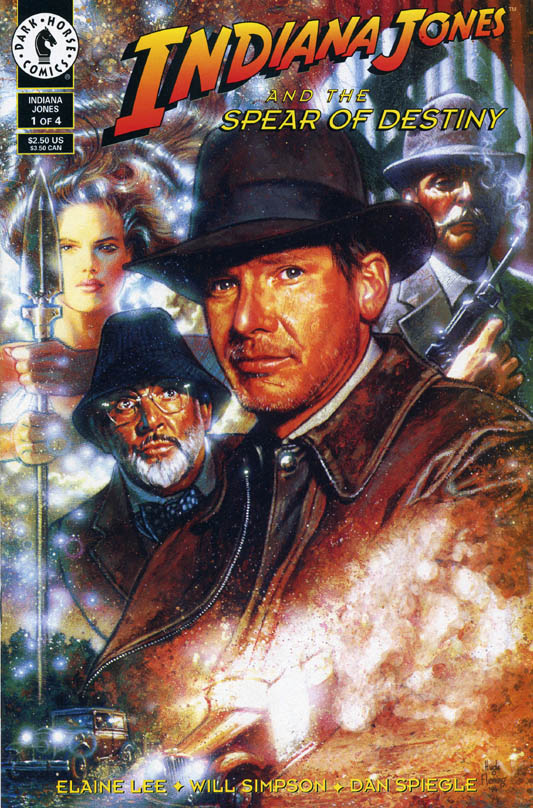
There are a lot of conflicting reports on whether Spear of Destiny was ever seriously considered as a project after Iron Phoenix's cancellation. Supposedly based on an idea by Aric Wilmunder, Indy (along with his father) would search for biblical artifact The Spear of Longinus, the weapon that pierced Christ's side and allowed his blood to be caught by the Holy Grail.
We only learned of this project's existence after an interview with Indy novel writer Max McCoy, where he said that he wanted to write a book about Indy and the Spear of Destiny but wasn't allowed to because LucasArts was making a game using it.
It is possible LucasArts merely optioned the idea and wouldn't let McCoy use it in case they wanted to, because according to Wilmunder the project never existed. Oh well.
The Comic Book
Along with Iron Phoenix and Spear of Destiny, Dark Horse Comics also ran an adaptation of Fate of Atlantis. A very loose adaptation (I don't remember Indy going to Leningrad in the game, in any of the three paths!) but still, any medium that shamelessly shows Sophia stripping is worth a look. Hal Barwood and Noah Falstein are credited with the story, so they must have worked quite closely with LucasArts.
Among the numerous changes, Heimdall is now Thorskald, Sophia's only holding dinner parties rather than sold-out shows, there's no Amber Fish (BOO!), the aforementioned trip to Leningrad replaces the Azores, and for some reason the writers seemed compelled to include a pointless Barnett College jock character with a sub-plot. Aside from that, it's mostly faithful.
There are a number of things to like about the comic adaptation. Sophia and Indy's relationship gets explored a lot more thoroughly, and is completely consistent with the game, in which it was only really touched upon. There are several very Indy-ish moments, like the fight where Indy's taking a beating from Nazi thugs while Sophia takes a really long time to aim her gun. Indy's yell of "just shoot somebody!" could've easily come out of the films. Marcus gets a bit more of a role too, which is always good.
Some good points about Atlantis are made too, getting more into the story about Nur-Ab-Sal and the God Machine. Indy's explanation of why there couldn't have been a continent in the Atlantic Ocean is pretty clever and logical too.
Then again, there are some utterly terrible moments. The dialogue is occasionally atrocious (when in the games or films has Indy ever uttered the phrase "good grief"? Or "oh, sheep-dip!"?), Indy sometimes comes across as a bit of randy teenager (then again, after watching Sophia take her clothes off I'd probably imagine a few things too), and Kerner has a dodgy '70s porn star moustache. And how can you possibly spell Adolf Hitler wrong?!
The art is mostly good, with the God Machine and Orichalcum Maker looking very similar to the games. Atlantis itself is particularly gorgeous to look at, despite occasionally looking like SeaWorld. It's a pity the artist seemed determined to make Indy look as less like Harrison Ford as possible.
It's definitely worth a read if you're an Indy fan, despite the occasional terrible line.
Note: Sophia Hapgood would appear once again in a Dark Horse Indy comic, Thunder in the Orient.
The Action Game
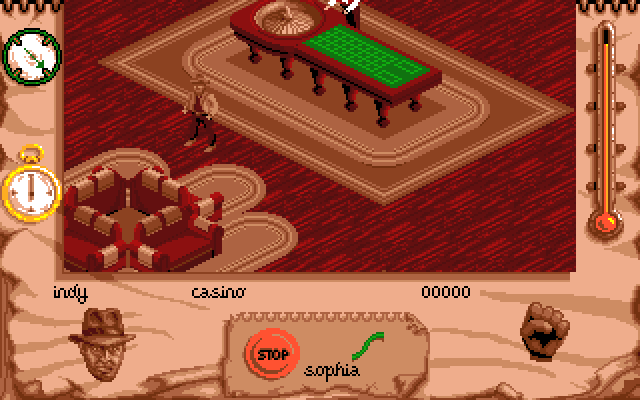
This, however, is not worth a play if you're a fan of Fate of Atlantis, Indiana Jones, or even slightly good computer games. Played from a dodgy isometric viewpoint as either Indy or Sophia (at least supposedly, I didn't recognise either of them), The Action Game version of FOA is, much like the Last Crusade actioner, completely and utterly awful. Who the hell cares about rigged roulette tables? I know Indy occasionally veers towards Bond, but a Monte Carlo casino is a bit too much of a veer (Sam, is 'veer' a real word?).
Mostly it involves walking around, picking things up and hitting people. With poor graphics even for 1992 and no fun whatsoever. And Sophia can barely manage the hitting part. This is not worth your time. Trust me.
Indiana Jones and the Fountain of Youth
With the lack of a proper SCUMM Indy game after FOA, several teams of fans took it upon themselves to give the world the follow-up it so desired. Out of this list, the most promising and fortunately still alive and kicking is Fountain of Youth by development team Barnett College.
Set in 1939 before Poland was invaded, FOY sees Indy, Marcus Brody (yay) and student Shelly Hartley searching for the kidnapped Dr. John Burton, who is being used by the Nazis to find a certain titular lost legend. The demo of the game was released in 2006 and impressed everyone who played it, showing just how skilful the team really were. We caught up with lead programmer Jan Simon and background artist Misja 'Miez' van Laatum to talk about the game...
What role do you play on the team – and what do you do in real life?
JAN: I am the only programmer on the team. There has been another one before me but he disappeared with the source code in 2005. I read about the job that opened, applied instantly (I had already been following the project for over a year) and got it - which probably had a lot to do with the fact that I had already done work on other projects which reached a certain amount of popularity in the adventure- or at least the AGS scene. The first objective was to program the demo for which all content was already produced, now the full-game is and has been in production for some time.
Being the programmer means that I take all the elements created by our talented team (backgrounds, characters, animations, music, dialog and story) and put them together, but it also requires me to implement special stuff (fights or cut-scenes have to be programmed or particle-systems for visual effects). Both parts are equally important (the first is what I call 'scripting', the latter one 'programming'), but I favour the second one, mostly because it isn't as repetitive and always poses new technical challenges.
In real life, I am 20 years old and I study English and Sound Studies at University Bonn. My interests include music (playing guitar, song-writing, audio production), sports (badminton, fitness, tennis) and, of course, designing, drawing, animating and programming stuff on the computer.
MIEZ: I'm the background artist for the game - that means everything from storyboard to finalised background art. I also occupy myself with concept art, design and animations for the FoY website (have been trying to design a new look for the website - but it's a slow process). I also make incidental animations for the game; doors opening, waves lapping etc.
Every now and then I help out with puzzle or story design. Even though the team members have pretty well defined roles, we tend to be quite free form about things.
In real life (what? Indiana Jones and the Fountain of Youth is not real life?) I'm a freelance (web) designer and games tester. I'm also an artist.
How many times have you each played Fate of Atlantis and what do you like about it?
JAN: Well, Fate of Atlantis was one of the first games I ever played (I only remember playing the fourth part of Commander Keen before that) and I remember only being allowed to play a certain amount of time each day and thus trying to solve puzzles by memory in the time in-between, alone and with friends who would come over in order to play together. In fact, I remember a time where a friend of mine would come over to my house after school and we would try to solve some puzzles in Fate of Atlantis and then we would walk over to his house and use the time he was allowed to play in order to advance in Day of the Tentacle. That's the golden age of adventure playing for me...
Anyways, listen to me ramble on like an old guy. I can't really recall exactly how many times I have beaten the game, but I have finished all three paths at least twice and I'd guess the overall play-count to be at around eight times - where only the last three have been in recent years. What I loved and still love to this day about the game is the semi-serious, sometimes even scary atmosphere, the wonderful locations (I loved the submarine and the introduction-sequence for example) and the stunning art and music.
Fate of Atlantis might not be the best in any of these categories, but its quality in each of them makes it one of the very best adventure games of all times. Also, its three path design and in-game fights were certainly unique elements in a game of its genre and time.
MIEZ: I think I've played it four times... two times the Amiga disk version and the talkie PC version twice as well. I tend to look at it mostly from my "field" - so I simply adore the graphics. But there's much to love in the game: the story is great, the triple path mechanic is damn clever and I've always enjoyed the excellent voice acting of the talkie version.
Why, how and when did you join the team?
JAN: When I first read about the project, I was instantly in love with the idea (who doesn't like a new episode of one of your favourite series, especially after LucasArts betrayed its fans with Tomb Raider action-based clones instead of classy, witty and beautifully hand-drawn adventure games) and, of course, the beautiful artwork that could already be admired on several screenshots.
MIEZ: Good question ... I'm not even sure how and when I joined the team. I was most likely looking for something Indy related online (I've always been a huge Indiana Jones fan) and stumbled upon the Fountain of Youth team. They were looking for background artists and I thought "let's give it a try!". That must have been more than 5 years ago!
How did you decide on the MacGuffin and story?
MIEZ: The mythical artifact (no spoiler: it's the Fountain of Youth) was decided upon before either of us joined the team... I do think the Fountain is a good artifact to build the story around, after all, a lot of the "classics" had already been spoken for: the Grail, the Ark, Atlantis...
How many people have you got working with you?
JAN: There's our project-leader and musician, our background-artist, our character-artist and our story-guy in the inner circle of active members. There have been lots of people coming and going, but these are the ones who are actively involved in creating the game. Then there's also a person who moderates our forums and who is responsible for the installer, and there are the beta-testers, of course.
What part of the game has taken the longest to implement?
JAN: This is very hard to answer. The full-game is not yet in a state that would allow me to give any answer to this, but if I think back to the days when I was programming the demo, I have to say, there just isn't one single thing that takes the longest to implement. It's just a lot of work including room after room and then bug-testing it all, but there's nothing that has got me stuck or anything.
MIEZ: I do think the story and coding will possibly take up the largest amount of our time.
Most (if not all) of the other Indy fan-games have stopped development. Why do you think this is and how have you guys battled on?
JAN: It's always extremely hard for a team of freelance workers to stay together if they don't even know each other. Motivation starts out great and then drops every day. With this project however, I feel that the quality of the work of the other team members continues to push me to keep working on it. Also, we avoid situations in which a member might lose interest (every idea by any member is always appreciated and taken seriously, as is criticism).
MIEZ: Fan projects by their very definition are hard to keep going. After all: the project is a hobby to all involved, everybody has "real life" to invest time in and making a game is just a great big HUGE pile of work... So people come and go, real life tends to interfere, etc.
I think we've kept going because we really, really love the project and because of the enthusiastic audience response we keep getting.
Do you live in mortal terror of LucasLegal?
JAN: Not really. Of course, the legal department of the company could easily kick down this castle we've carved into the sand and stop what has pretty much become a second life for its dedicated fans and developers, but this is one of the few situations in which there's no point in worrying before anything happens.
Also, there are some indications that we don't have very much to fear. With all the interest our project has thankfully generated (over 50.000 downloads of the demo version in the first weeks, I believe) it's hard to imagine that LucasArts has not yet been informed of our doings. Maybe they're not as soulless as they're made out to be and can understand, maybe even appreciate the work of a few dedicated fans who have no intention of making any money or damaging their inventions.
MIEZ: I think (read: hope) that as long as we keep doing things "clean" they might let us get away with it. And with "clean" I mean that we will never let the game go commercial and we use only original assets; no ripped graphics, original music, no stolen script etc.
Roughly how close are you to completing the game, if you can say?
JAN: I really can not give you a good answer to this question, nobody knows how smooth development will continue and how long the beta-testing will take for a full-length game.
For the record, we were surprised about the time it took to test the demo version and had to post-pone the date of release time and time again - this did not do the project good back in the day and we won't make this mistake again!
MIEZ: We are well underway with the intro section of the game - and I think that constitutes about 10% of the full game. So we have still some work to do.
Indiana Jones and the Fate of Atlantis 2
The other impressive-looking fan project is a proper sequel to FOA, set five years after the game in 1944 where the Nazis have discovered that Atlantis isn't as dead as presumed. With the tide of the war turning against them, they make one last desperate attempt to rediscover the power of the gods...
Despite sounding very promising and at first having a thriving and supportive fan community, development of the game now continues totally in silence, if at all. The forum has been shut down, the website is static and hasn't been updated in several years, and all contact details have been removed. We tried to get in touch with a member of the team, and were told by them that speaking of the project would be against their "policy."
Indiana Jones and the Spear of Destiny (Again)
Several attempts were made to make a fan project based on the cancelled Spear of Destiny, but unfortunately were all for nought. A demo was actually made, hosted by the excellent Indiana Jones website The Indy Experience, but sadly the site is now offline and the demo with it.
Indiana Jones and the Infernal Machine

After a staggering seven years of waiting, the next proper Indiana Jones game from mostly the same team as Fate of Atlantis finally appeared, and boy was it different. Taking a few plot-points from Iron Phoenix, it was set post-WW2, Russians had replaced the Nazis as the villains, and Shambala Sanctuary was in it.
Instead of an adventure game, LucasArts would head into Tomb Raider territory (literally – it went head-to-head with the fourth instalment of Lara Croft's adventures) with mixed results. Some fans loved it (myself), others hated it (jp-30). Nevertheless, it was an epic game with some spectacular levels, despite a veritable mountain of problems to nitpick. The words "an idol!" come to mind.
And of course, it was ripped off completely by Kingdom of the Crystal Skull. Oh come on, the Infernal Machine itself appears in the finale! And Spalko's got Sophia's haircut!
Indiana Jones and the Emperor's Tomb
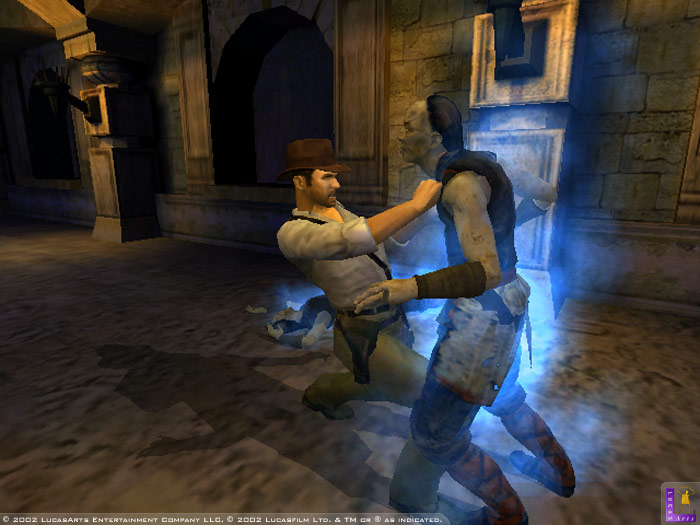
A shorter wait but a different development team, with a design that moved even further away from the glory of FOA. The story once again had Nazis and with an interesting Chinese artifact and setting, but was quite badly told. Fans mostly came for the action though, with Clint Bajakian's terrific soundtrack also being a draw. This was the first time fans really felt like Indy.
It's interesting to note that The Mummy, which was heavily inspired by the Indy films, would entirely rip off this game's story with its most recent entry Tomb of the Dragon Emperor – and make it worse. I mean, Yetis?
Indiana Jones and the Staff of Kings
Little is known solidly about the next proper Indy game, apart from the scraps and rumours fans have pieced together. Even the title hasn't been properly announced by LucasArts, who are handling development duties once again for the 360/PS3 outing.
Further Reading
- Aventuraycia's 'Missing Presumed...?' on the Indy games
- Dark Horse Comics website.
- Anson Jew's Blog Site
- An animation reel provided by Anson Jew, showing various LucasArts games. At 0.43 there's an unused piece of animation from Iron Phoenix.
- Barnett College, home of the Fountain of Youth fan project. Download the hugely impressive demo here.
- Amber Fish Arts, home of the M.I.A. Fate of Atlantis 2 fan project.
- Read about the attempts to get the Spear of Destiny fan project going again. Sadly the host website, the superb Indy Experience, is now offline.